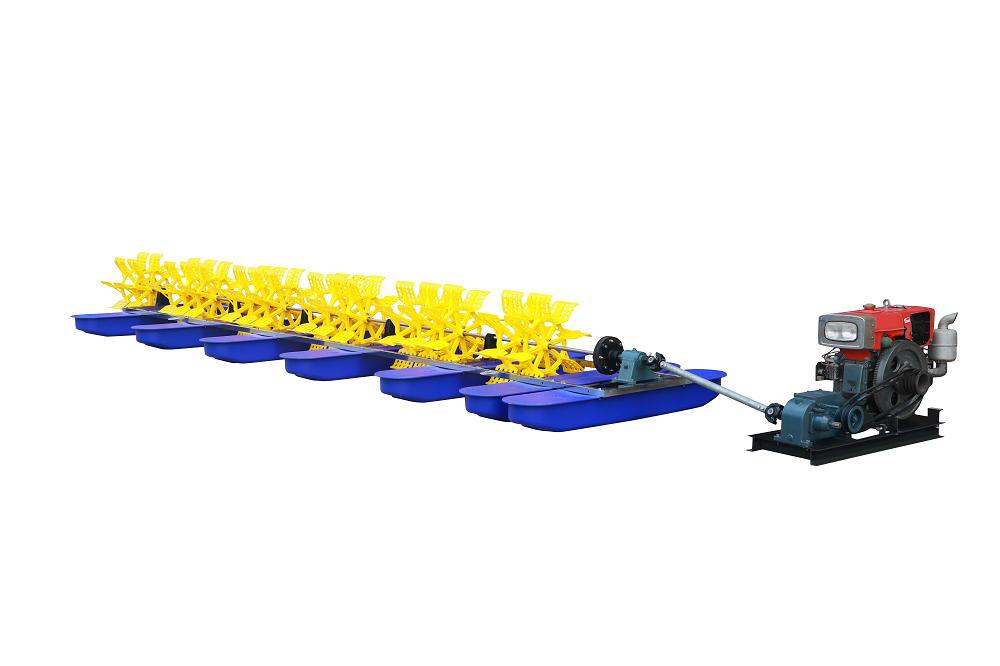1. Working Principle
Paddle wheel aerators rotate blades to agitate water, creating currents and bubbles that increase dissolved oxygen (DO) levels. The blades are mounted on a horizontal shaft powered by an electric motor.
2. Key Features
High-efficiency oxygenation: Rapidly boosts DO levels.
Water circulation: Prevents stratification, evenly distributes oxygen/nutrients.
User-friendly: Simple structure for easy installation/maintenance.
Wide applicability: Suitable for various aquaculture ponds.
1. Working Principle
Splash aerators spray water into the air, increasing DO as droplets fall back into the pond. The system consists of a pump and spray nozzle.
2. Key Features
Effective oxygenation: Expands water-air contact area.
Visual appeal: Creates fountain-like decorative effects.
Multi-purpose: Ideal for aquaculture and ornamental water features.
1. Working Principle
Jet aerators mix air and water through high-speed jets, producing fine bubbles. Composed of a pump and specialized nozzle.
2. Key Features
Deep penetration: Delivers oxygen to lower water layers.
Compact design: Space-saving for confined areas.
High DO transfer: Efficient gas-liquid mixing.
Feature | Paddle Wheel | Splash | Jet |
Mechanism | Blade agitation | Water spraying | High-speed jetting |
Water Depth | Shallow-medium | Shallow-medium | Deep water |
Structure | Horizontal blades | Pump + spray head | Pump + jet nozzle |
1. Pond Depth:
≤2m: Paddle wheel/Splash
>2m: Jet aerator
2. Oxygen Demand:
Match aerator power to stocking density
3. Aesthetic Needs:
Splash aerators for decorative purposes
4. Maintenance:
Prioritize corrosion-resistant models for saltwater use
Pro Tip: For intensive shrimp farming, combine paddle wheel (surface) and jet (bottom) aerators for full-depth oxygenation.
